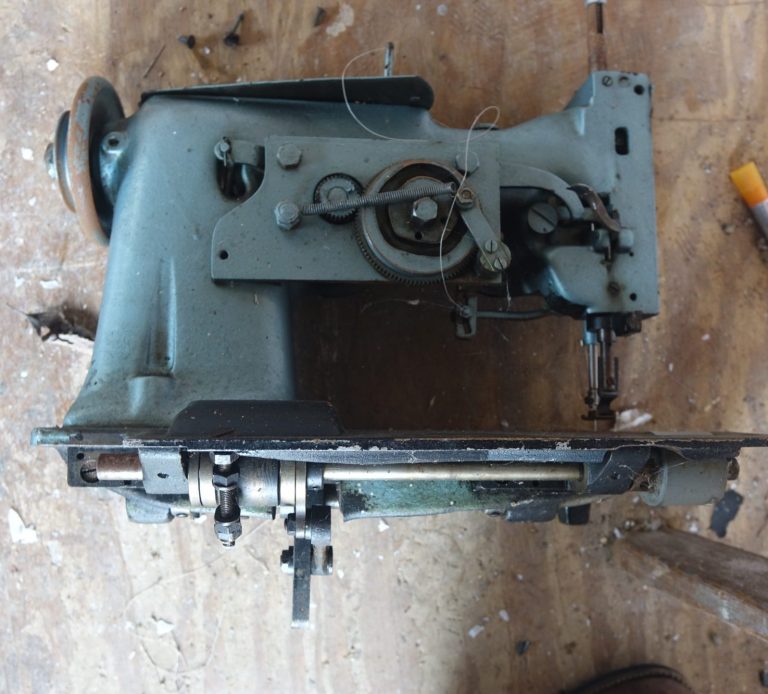Written Scheme of Investigation (WSI) and Level 2 Historic Building Recording (HBR)
Undertaken as part of the pre-application works requested by the Local Planning Authority
East Anglian Heritage was commissioned to undertake the writing of a WSI, and undertake the follow up HBR survey and reporting. This was required for submission by the client as part of a wider package of Heritage Assessment for the submission of an full planning application for the demolition of the four buildings and the building of a number of residential units. One of the main aim of the HBR was to understand the nature and use of the building as far as could be understood from the buildings themselves.

One of the many items associated with the manufacturing of sale noted in the HBR survey, this is a Singer 143 T1 industrial type sewing machine © East Anglian Heritage
The Demolition of four building and their replacement with residential units.
Issues
Based upon the Local Planning Authority pre-application communication a programme of Heritage assessment was requested to be submitted with any forthcoming planning application for the demolition of the four building and their replacement with domestic unit.
It was not clear what the nature or historical significance of the four building were and it was uncertain if the building related to the maritime culture of West Mersea.
Therefore East Anglian Heritage was commissioned to produced a level 2 HBR of the four buildings which are proposed to be demolited.
Solution
East Anglian Heritage initially undertook writing a Written Scheme of Investigation (WSI) which was approved by the County Council Archaeology advisor, to which East Anglian Heritage undertook the Historic Building Recording (HBR) survey and report written to fulfill the requirements of the agreed WSI.
The HBR identified that the timber structure and other associated buildings were placed on the site around 1953-1961 with some expansion of the timber building over the years. Three of the four buildings were ancillary building to the sail making factory, while one building was idenitied as a former office and later club house all of uses associated with the use of the latorial enironment of West Mersea.
Outcomes
Once the HBR was finished and approved by the County Council Archaeological advisor, the report was used as a baseline study by a third party in writing a HIA, both of which have been submitted by the client in support of their application.
Heavy tread and other material left in rear storage unit formed of old railway carrages, West Mersay, Essex © East Anglian Heritage
